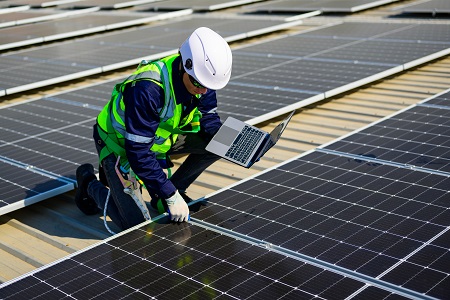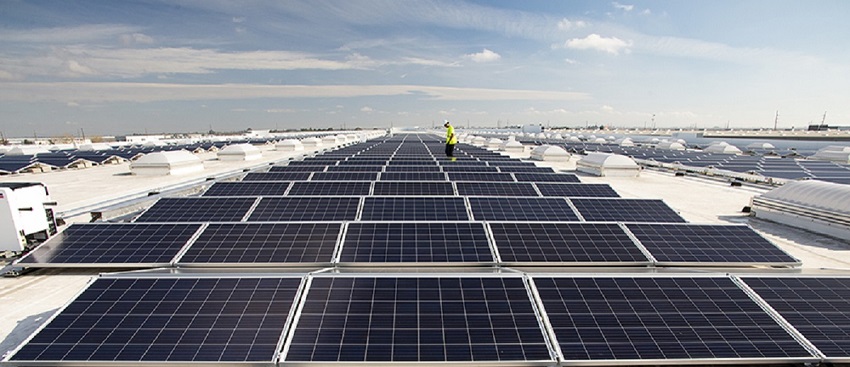Solar Panels For Rural Homes PA: Our Firm Specializes In The Setup And Management Of Photovoltaic Energy Systems
History and Advancement of Solar Panel Companies
The beginning of solar panel companies can be traced back to the 1800s when Alexandre Edmond Becquerel discovered the photovoltaic result. Would he have thought of how his discovery would revolutionize the way we harness energy?
Early Beginnings

In 1954, Bell Labs established the very first useful photovoltaic cell. This marked a significant milestone in the history of solar energy. They were at first used to power space satellites, but who understood this was simply the start?
Evolution and Growth
- In the 1970s, an energy crisis led to increased interest in eco-friendly energy sources, including solar energy.
- By the 1990s, advancements in innovation and increasing ecological awareness led to the development of photovoltaic panel business internationally.
A New Age
As we went into the 21st century, the solar market saw an exponential growth. The demand for tidy and sustainable energy produced a new period in the photovoltaic panel industry.
Fascinating Truths
- The world's very first solar power station was constructed in 1982 in Hisperia, California.
- By 2019, solar power had ended up being the world's fastest-growing source of power.
Indeed, the journey of solar panel business has been exceptional, hasn't it? The future holds enormous capacity, with continuous improvements paving the method for a sustainable future. Can we visualize a world powered entirely by solar energy?
Moving on
Today, photovoltaic panel companies continue to innovate, making every effort for more efficient and cost-effective options. The development of solar energy has come a long way, and yet, the journey has actually simply started.
The Core of Photovoltaic Panel Production
Ever question what enters into creating those shiny, sun-loving solar panels? The procedure is as impressive as completion item (Solar Installers Pennsylvania). High-purity silicon, the primary ingredient in solar panels, undergoes numerous transformations to ensure its performance and toughness
From Sand to Silicon
Crystalline silicon, the backbone of many solar panels, stems from easy sand. It's an interesting journey, isn't it? The sand goes through a high-temperature response with carbon to form silicon. Nevertheless, this isn't just any silicon. The silicon used in solar panels is "solar-grade," with a pureness of 99.9999%. It's this purity that allows the panels to efficiently convert sunlight into power.
Ingot Formation
As soon as the silicon is pure enough, it's time to form ingots. Picture a big, round block of solid silicon. How is this accomplished? Through a procedure called Czochralski process, where the silicon is melted and after that gradually recrystallized. It's a slow dance of science, leading to a solid item that is nearly as pure as the raw silicon itself.
Slicing into Wafers
The ingots are then sliced into wafer-thin pieces, like slicing a loaf of bread. Each piece is a potential solar cell, waiting to harness the power of the sun. Did you understand that the silicon wafers are just about 200 micrometers thick? That has to do with half the thickness of a human hair! The procedure needs precision and patience, but the outcome is a set of wafers prepared to be turned into solar cells.
Developing Solar Battery
With the wafer all set, it's time for the magic to take place. The silicon wafer is 'doped' with other elements like phosphorous and boron to develop an internal electrical field. It's this field that allows the conversion of sunshine into electrical energy. Complex, isn't it?
Assembly and Quality Control
Solar cells are like puzzle pieces that come together to form a solar panel. The cells are soldered together in a grid-like pattern, then covered with a protective layer of glass. The final action involves strenuous quality assurance checks. After all, it's essential that every photovoltaic panel carries out at its peak, would not you agree?
Insider Tip
Always keep in mind that even the most efficiently produced photovoltaic panel can lose performance due to dirt and particles build-up. Regular cleaning can considerably enhance your panels' efficiency.
Understanding the Ecological Impact of Photovoltaic Panel Business
Ever considered the ecological footprint of a photovoltaic panel company? Green innovation, such as solar, has changed our energy landscape, but what about the behind-the-scenes effect?
The Production Process: A Double-Edged Sword
The production process for solar panels requires a significant quantity of energy. This process, called 'em bodied energy', can be considered as a kind of 'energy financial obligation'. It's a little like borrowing today's sunshine to power tomorrow's energy requirements. However fret not, the energy payback time is often shorter than you 'd believe!
- The energy payback duration for solar panels is normally 1-4 years.
- After this duration, the energy produced is basically carbon-free.

Life After Decommission
And what occurs when a solar panel reaches the end of its lifespan? Can it just be tossed into the garbage? No, that would not be extremely green, now, would it?
A viable solution is recycling. While photovoltaic panel recycling is still in its infancy, it holds a world of potential. Recycling not just keeps products out of landfills but also lowers the need for new raw products.
Accountable Sourcing: More Than A Buzzword
Where does the silicon come from, you ask? The industry's need for silicon and rare minerals can lead to damaging mining practices. Responsible sourcing is for that reason important to decrease hazardous ecological effects.
Minimized Carbon Emissions: The Bigger Picture
Let's not forget the larger image: solar energy considerably lowers carbon emissions. When installed, photovoltaic panels generate tidy, sustainable energy, offsetting their initial manufacturing footprint.
Simply put, the ecological impact of solar panel business is a complex concern. However, with responsible practices, the guarantee of a cleaner, greener future is well within our grasp.

Financial Performance and Market Share of Photovoltaic Panel Companies
Ever wondered why some photovoltaic panel business - Solar Installers Pennsylvania outperform others in the market? What sets them apart? The crucial lies in their monetary performance and market share
Financial Performance: A Critical Indicator
Financial performance plays a pivotal role in the success of any company. For photovoltaic panel companies, it's no various. Strong financial efficiency allows these companies to buy advanced technology, research, and development, thereby developing premium, effective solar panels.
How do they attain this? With a focus on cost efficiency and strategic investments. Companies that manage to reduce production costs without compromising on quality tend to fare better in the market.
Market Share: A Step of Success
Market share, on the other hand, is a direct reflection more info of a business's appeal amongst customers. A high market share means more homeowners are selecting their solar panels over rivals.
So, what's the secret dish for getting a bigger market share? It comes down to client complete satisfaction and brand reputation. Business that prioritize customer requirements and keep a favorable brand name image are most likely to capture a bigger share of the marketplace.
- Consumer Satisfaction: Solar panel companies that deliver reputable products and remarkable customer support tend to have higher client satisfaction rates.
- Brand Track record: A strong brand reputation is built gradually through consistent shipment of quality product or services.
Financial Performance and Market Share: The Symbiotic Relationship
Interestingly, the relationship between financial performance and market share is not one-sided. They feed off each other. A strong monetary efficiency can increase a business's market share, while a high market share can enhance monetary efficiency.
As a solar panel company, stabilizing these 2 aspects is essential for long-lasting success. A business that ignores either of them may discover it challenging to keep its position in the competitive solar market.
The Takeaway
What does all this mean for you? Whether you're a property owner seeking to install photovoltaic panels or a financier eyeing the solar market, comprehending the monetary performance and market share of solar panel companies is essential. They are essential indications of a company's health and potential for future growth.